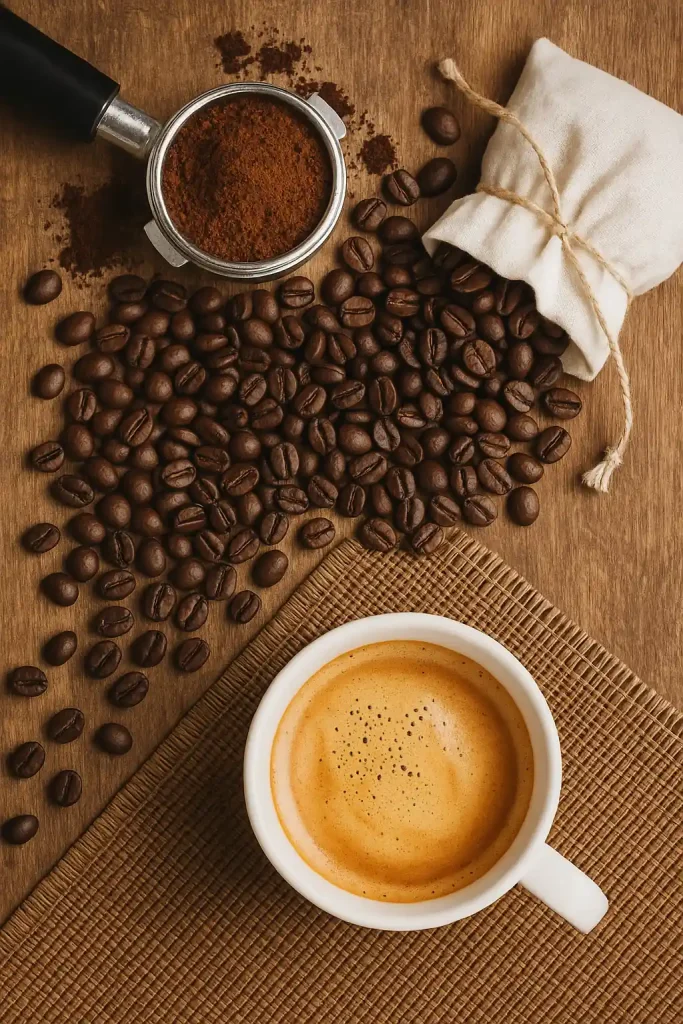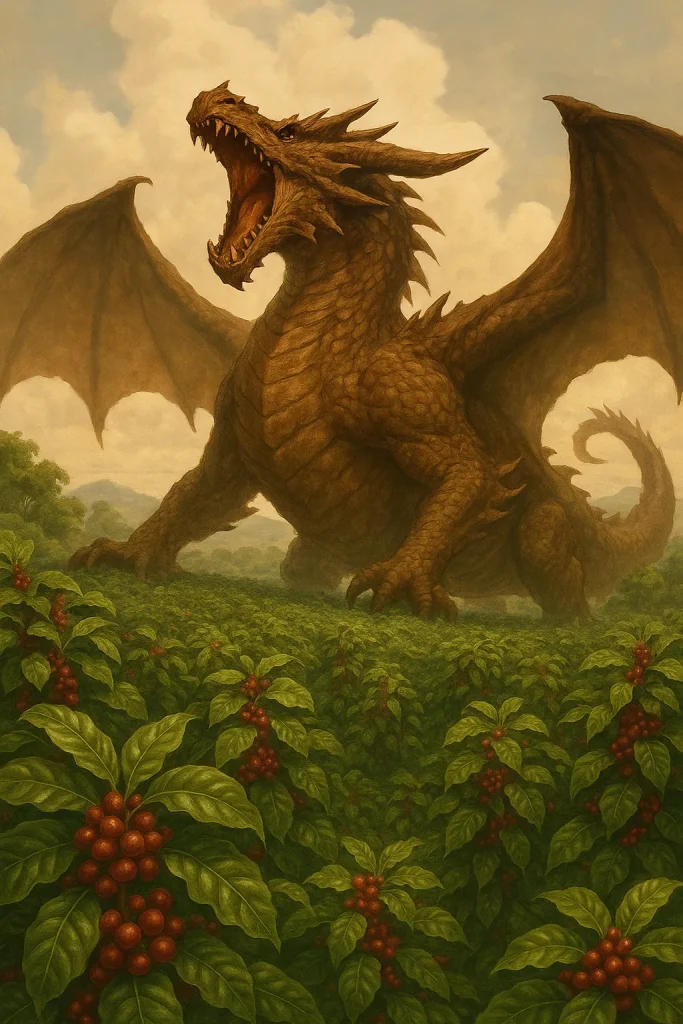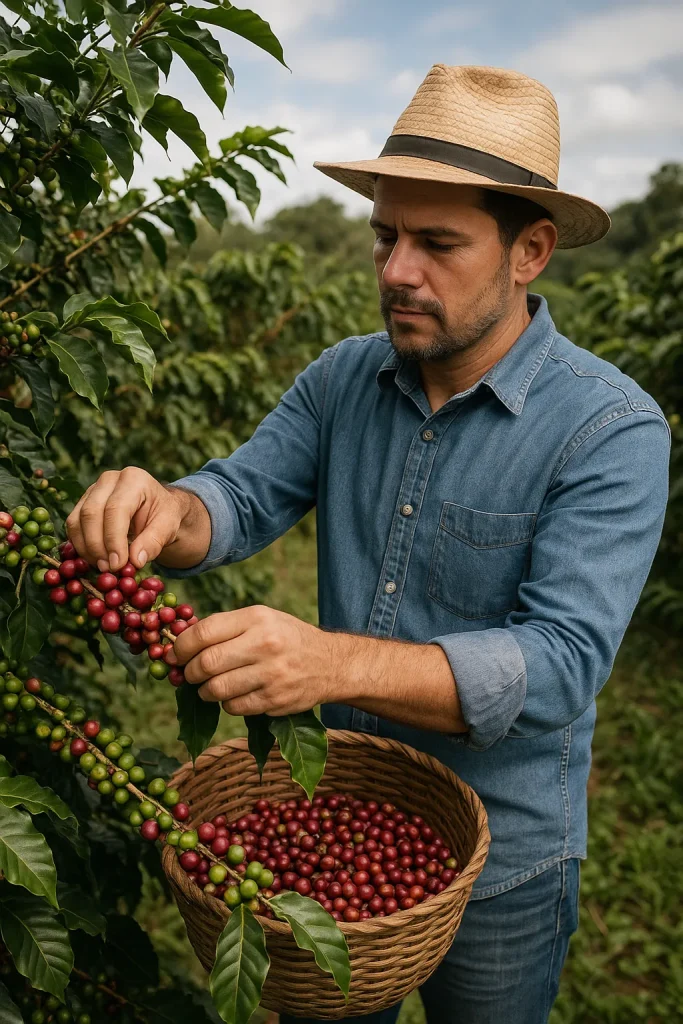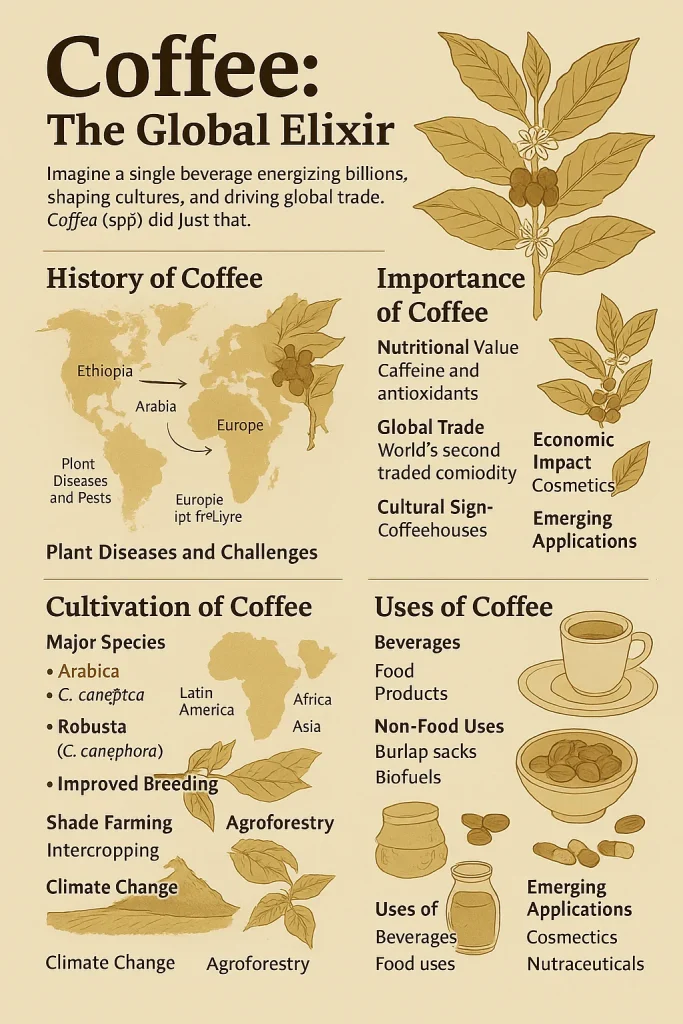Introduction
Coffee, a cherished drink, fuels mornings and conversations worldwide with its bold taste. Originating in Ethiopia around the 9th century, it now reaches 98% of countries. For example, people often ask, what is a flat white coffee, drawn to its smooth, creamy texture. Coffee’s story spans centuries, from ancient traders to modern baristas. Furthermore, it sparks social bonds and creativity. In fact, 2 billion cups are consumed daily globally. This article explores coffee’s history, popular types like macchiato and americano, brewing methods, and its cultural and economic roles, revealing why it remains a global favorite.

History of Coffee
Coffee’s journey began in Ethiopia, where a goatherd named Kaldi noticed its energizing effects. By the 15th century, it spread to Yemen’s Sufi monasteries. What is a flat white coffee? This modern creation from Australia shows how coffee evolved from simple brews. Additionally, cultivation reached Asia, Africa, and the Americas by the 17th century. For instance, the Dutch planted coffee in Java. Meanwhile, Brazil became a leader by 1720, now supplying 40% of global coffee. Coffeehouses, called “penny universities” in Europe, hosted lively debates. In fact, London boasted 3,000 coffeehouses by 1700. Today, coffee powers a $200 billion industry, blending tradition with innovation.

Types of Coffee
Coffee offers diverse flavors, each type crafted uniquely. Below, we answer common questions about popular varieties, highlighting their appeal.
Flat White: What is a flat white coffee? It’s a velvety Australian drink made with a double espresso and steamed milk topped with thin microfoam. What is a flat white coffee in cafes? It balances strong coffee with creamy milk, unlike a frothy cappuccino. What is a flat white coffee for baristas? It requires precise steaming for its signature texture. Moreover, what is a flat white coffee globally? It’s a favorite in 15% of coffee shops worldwide.
Macchiato: What is a macchiato coffee? It’s an espresso “stained” with a touch of foamed milk. What is in macchiato coffee? It features one or two espresso shots and a small foam layer for a bold taste. Additionally, what is a macchiato coffee in modern menus? Variations like caramel macchiato add sweetness, though traditionalists prefer the original. What is in macchiato coffee for balance? The foam softens the espresso’s bite.
Americano: What is the americano coffee? It’s espresso mixed with hot water, creating a lighter black coffee. What is the americano coffee in history? It was named during World War II to mimic drip coffee for American soldiers. Furthermore, what is the americano coffee for flavor? It’s milder than espresso, enjoyed by 20% of US drinkers.
Decaf: What is decaf coffee? It’s coffee with 97% of caffeine removed, perfect for caffeine-sensitive drinkers. What is decaffeinated coffee? It’s the same as decaf, processed using water or CO₂ to extract caffeine. For example, what is decaf coffee for consumers? It keeps coffee’s rich flavor, chosen by 10% of drinkers. What is decaffeinated coffee in production? It uses methods like Swiss Water to maintain taste.
These varieties show coffee’s range, appealing to all preferences. In contrast, what is a flat white coffee in this mix? It shines for its creamy elegance, bridging espresso and milk drinks.

Brewing Methods
Coffee’s flavor depends on its preparation. Espresso machines, used for flat white and macchiato, push water through grounds at 9 bars, producing 30 ml shots. What is a flat white coffee in brewing? It needs milk steamed at 60°C for smooth microfoam. Drip coffee makers, popular for americano, filter water through grounds, serving 50% of US homes. For instance, what is the americano coffee in preparation? It blends espresso with 100–150 ml of water. Meanwhile, French press and pour-over methods enhance bean flavors, used by 15% of enthusiasts. Decaf follows the same brewing steps. What is decaffeinated coffee in brewing? It mirrors regular coffee techniques, preserving taste. Additionally, what is decaf coffee in home setups? It’s easy to brew with standard equipment. Cold brew, steeped for 12–24 hours, suits iced drinks, favored by 25% of millennials. Therefore, what is a flat white coffee for home baristas? It’s accessible with budget-friendly espresso machines, bringing cafe quality home.

Cultural and Economic Significance
Coffee weaves through global cultures and economies. In Ethiopia, coffee ceremonies, lasting 2–3 hours, celebrate community. For example, Italian espresso bars serve macchiatos, shaping daily social life for 90% of adults. In contrast, US workplaces rely on coffee, with 65% of workers drinking it. What is a flat white coffee culturally? It represents modern cafe trends in cities like Melbourne and London. Economically, coffee supports 25 million farmers worldwide. Brazil, Vietnam, and Colombia grow 70% of the 10 million tons harvested yearly. Furthermore, fair-trade coffee, chosen by 40% of EU consumers, promotes ethical sourcing. For instance, Starbucks uses 99% fair-trade beans. However, climate change threatens crops, spurring innovations like drought-resistant plants. Thus, coffee unites traditions and markets, fostering global connections.

Leave a Reply